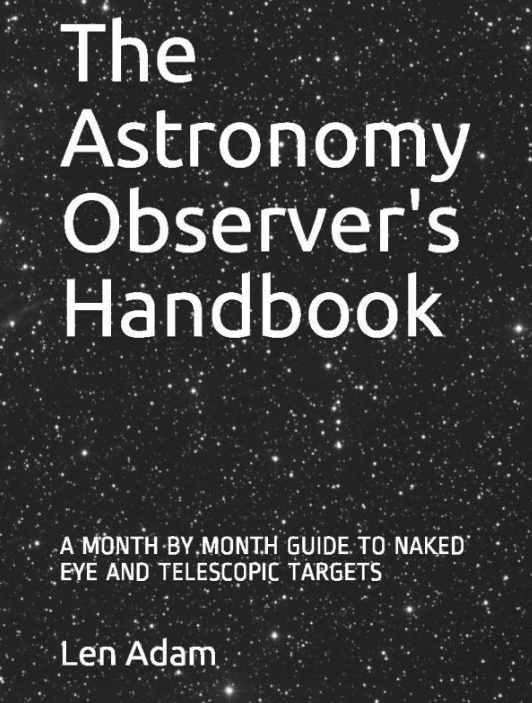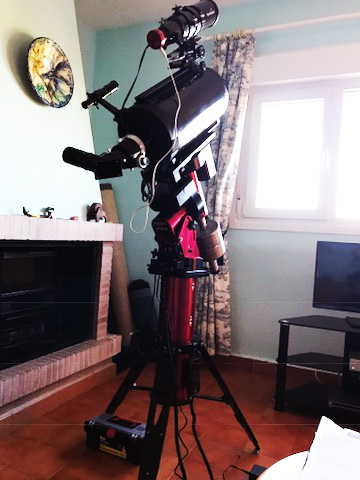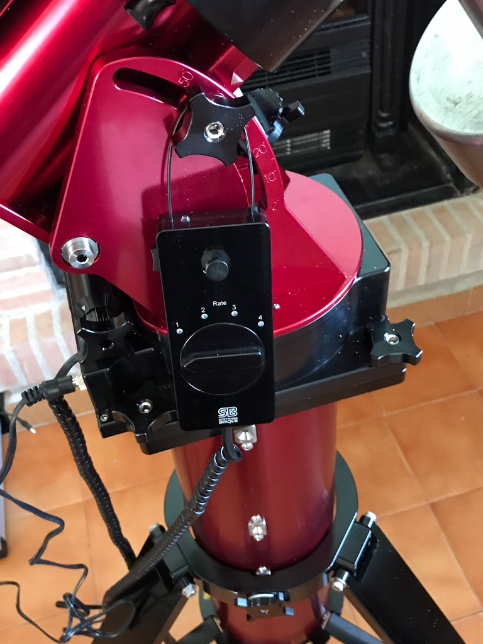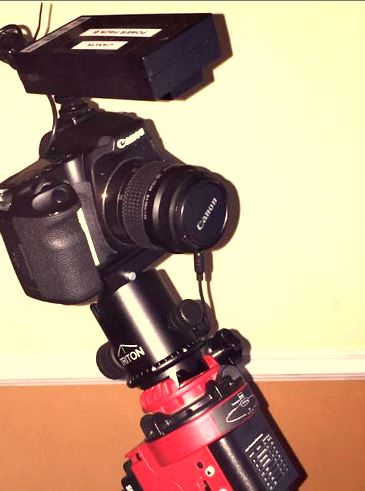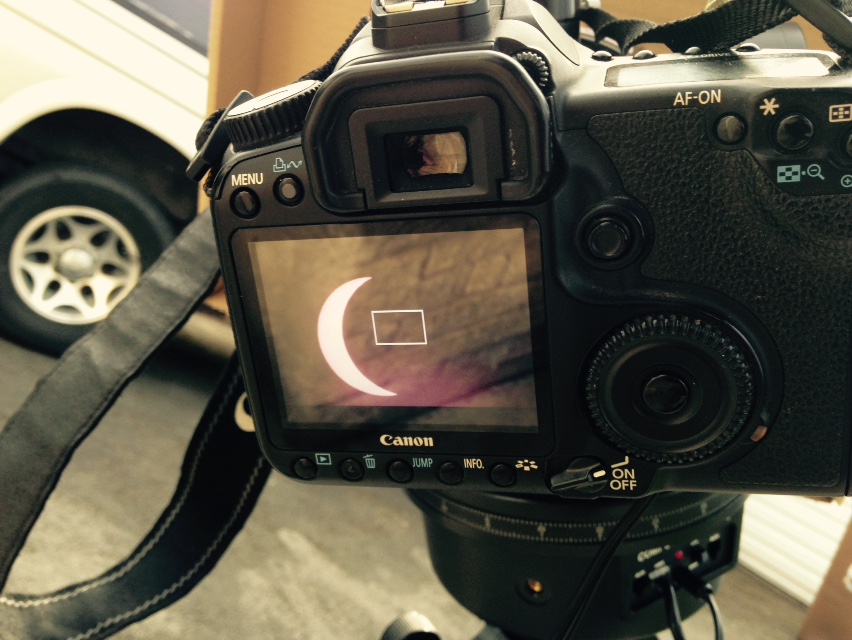SkyWatcher Star Adventurer Part 5
 Wednesday, January 6, 2016 at 6:54AM
Wednesday, January 6, 2016 at 6:54AM Polar Alignment Scope App
I have just spent the vast amount of £1.49 to download Polar Scope Align Pro. (There is a free version). Both my CGEM and Star Adventurer have Polar Scopes and I think that this app may be the best option for me. When you are aligning the Star Adventurer Mount using the polarscope you need to know the position of Polaris so that you can align the mount with the true pole. If I use my SkyX software I can check the position of Polaris very easily as I show below. The time is 13:48 on the 6th Jan 2016. So where is Polaris now. If you were to look at Polaris through binoculars now this is what you would see. (We pretend it is dark!)
 The SkyX All Rights reserved Software Bisque
The SkyX All Rights reserved Software Bisque
As you stand facing north with your binoculars the meridian (red vertical line) comes up from the south behind you, goes over your head and drops down to the north point on the horizon in front of you, passing Polaris on the way. You can see that Polaris is currently on the east side of the meridian as you look at it. Polaris is part of Ursa Minor so this little constellation is shown in the chart. If you draw a line from Polaris to Kochab in Ursa Minor the point at which it intersects the meridian is very close to the actual north celestial pole. Here is a closer view in the SkyX with the polarscope features turned on in this software.
 The SkyX All Rights Reserved Software Bisque
The SkyX All Rights Reserved Software Bisque
If you use the Star Adventurer Polar Scope you will see that it has an inverted image. Check out the scope during the daytime - I used a nearby chimney with a TV aerial - the image has been rotated by 180 degrees. This is what the SA scope looks like when you look through it.

If I use the app on my iphone this is what I get. The time is exactly the same as in the above image using the SkyX. I have selected the Star Adventurer Polarscope reticle from the list of possible scopes in the app.

The inverted view now places Polaris on the left of the meridian. This is what you will see if you look through the polarscope but you will need to adjust the mount to place Polaris on that cross. If you do that the mount will be aligned on the true pole.
Adjusting the mount to centre align Polaris on the cross.
This has to be done using the latitude adjustment knob and the azimuth adjustment knobs on the Equatorial Wedge. The bubble level needs to be checked to ensure the mount is horizontal.
 [Your Name Here] | Comments Off |
[Your Name Here] | Comments Off | 
